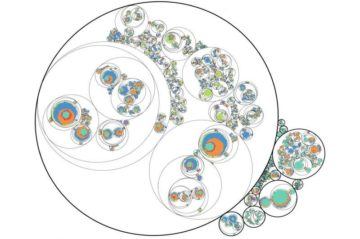From Phys.Org:
 It’s often cancer’s spread, not the original tumor, that poses the disease’s most deadly risk. “And yet metastasis is one of the most poorly understood aspects of cancer biology,” says Kamen Simeonov, an M.D.-Ph.D. student at the University of Pennsylvania Perelman School of Medicine.
It’s often cancer’s spread, not the original tumor, that poses the disease’s most deadly risk. “And yet metastasis is one of the most poorly understood aspects of cancer biology,” says Kamen Simeonov, an M.D.-Ph.D. student at the University of Pennsylvania Perelman School of Medicine.
In a new study, a team led by Simeonov and School of Veterinary Medicine professor Christopher Lengner has made strides toward deepening that understanding by tracking the development of metastatic cells. Their work used a mouse model of pancreatic cancer and cutting-edge techniques to trace the lineage and gene expression patterns of individual cancer cells. They found a spectrum of aggression in the cells that arose, with cells that were likely to remain in place at the primary tumor at one end and those that were more likely to move to new sites and colonize other tissues at the other end.
Of the cells that eventually became metastatic and grew in tissues and organs beyond the pancreas, the majority shared a common lineage, the researchers discovered. “By building a precision tool for probing cancer metastasis in vivo, we’re able to observe previously inaccessible types of information,” says Simeonov. “We were able to use this lineage tracing approach to rank cells based on how metastatic they were and then relate these differences in behavior to gene expression changes.” The group’s findings, published in the journal Cancer Cell, suggest that it’s not only genetic mutations that can drive cancer’s spread; the single-cell RNA profiling results underscore that gene expression patterns—which genes cells are turning on and off—play a key role in disease outcomes.
More here.
